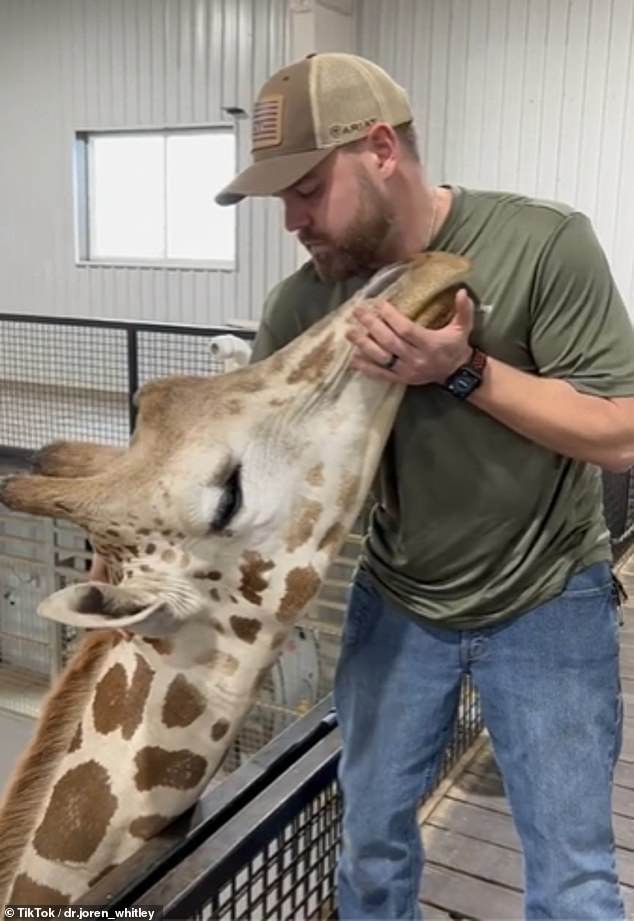A veterinary chiropractor has revealed he has helped more than 20,000 animals with his healing hands.
Dr. Joren Whitley, 34, of Edmond, Oklahoma, has run his chiropractic clinic since 2016 and sees an average of 80 animals per week.
Since he began practicing, Joren has performed over 25,000 chiropractic adjustments on pets and more exotic animals such as giraffes, tapirs, and even a tiger.
The vast majority of animals Joren treats, whether large or small, are fully conscious, but the most risky ones receive sedation to ensure the experience is painless.
Joren said: “I think what we are doing is making a big difference not only in the lives of the animals but also in the lives of the owners.
Dr. Joren Whitley, 34, of Edmond, Oklahoma, revealed that he has helped more than 20,000 animals since he started his practice.
‘Chiropractic is what I live and breathe. I did not choose to be a chiropractor. It was my vocation.
“I’m glad I have the opportunity to make a difference in so many people’s lives.”
Joren graduated from Oklahoma State University in 2012 with a bachelor’s degree in biochemistry and molecular biology.
After realizing that a job in a laboratory was not for him, he decided to go back to work in construction, a job he had done since he was 16.
After an on-site injury, Joren went to see his first chiropractor and that’s when he fell in love with the profession.
He applied to chiropractic school in January 2013 and in his senior year enrolled in the animal chiropractic program.
After four years of combined study, Joren graduated from chiropractic school and received his license to practice human and animal chiropractic.
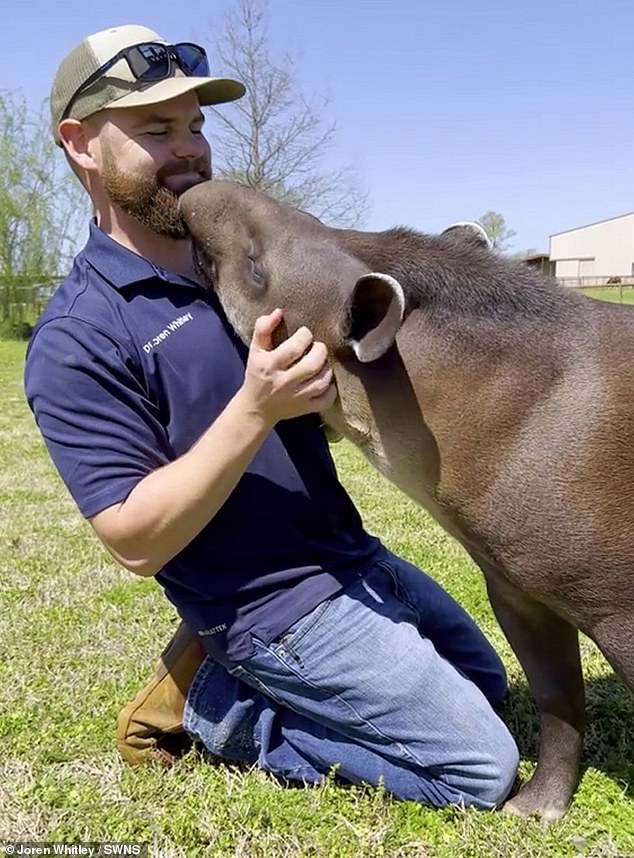
Joren has been running his chiropractic clinic since 2016 and sees an average of 80 animals a week.
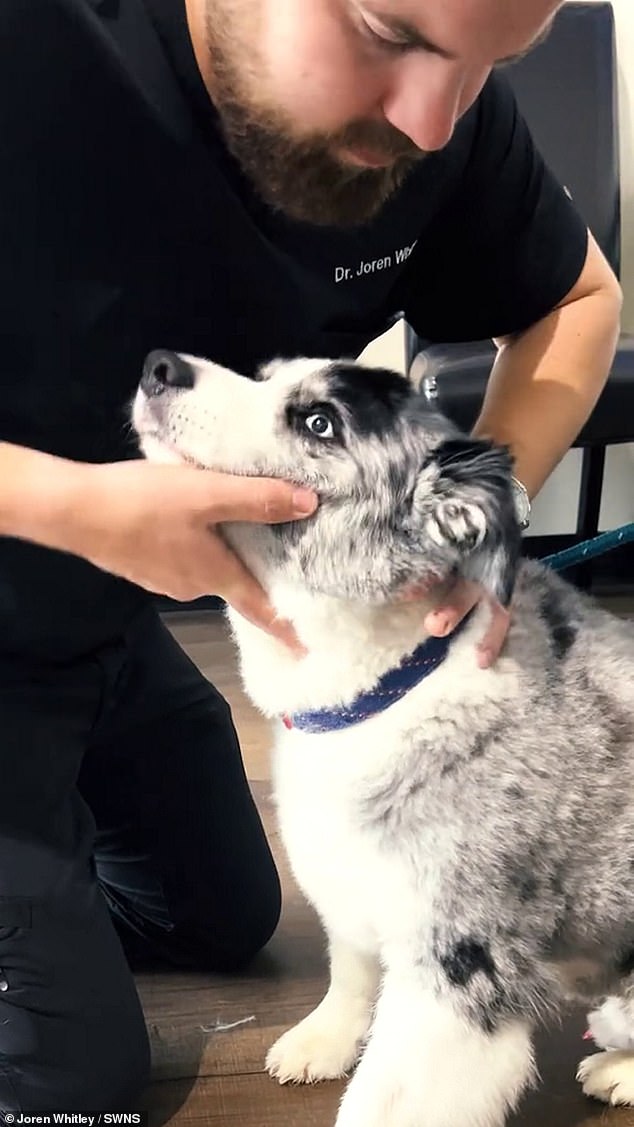
Since beginning to practice, Joren has performed over 25,000 chiropractic adjustments on pets and more exotic animals.
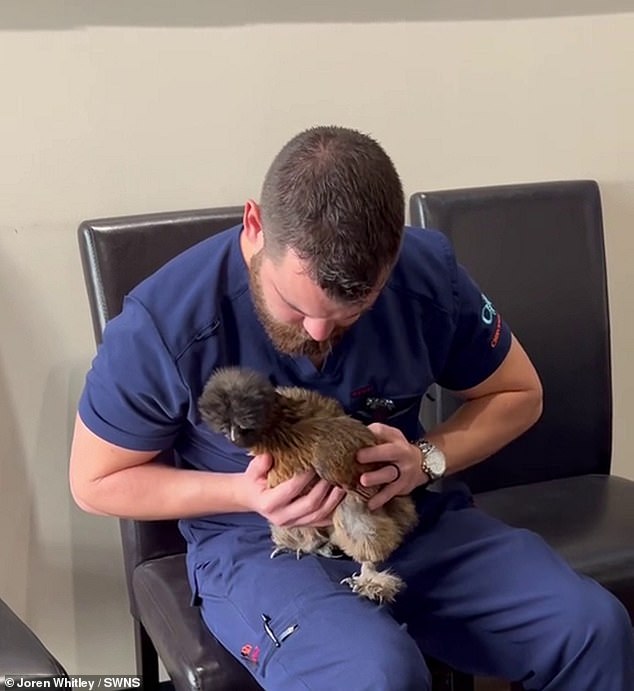
Joren even does his chiropractic work with chickens and smaller pets.
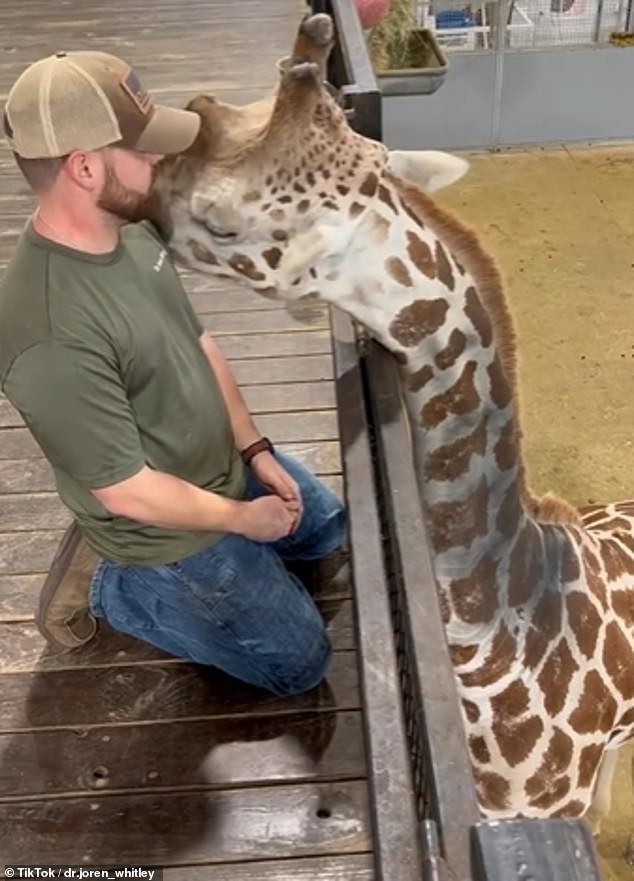
Joren graduated from Oklahoma State University in 2012 with a bachelor’s degree in biochemistry and molecular biology.
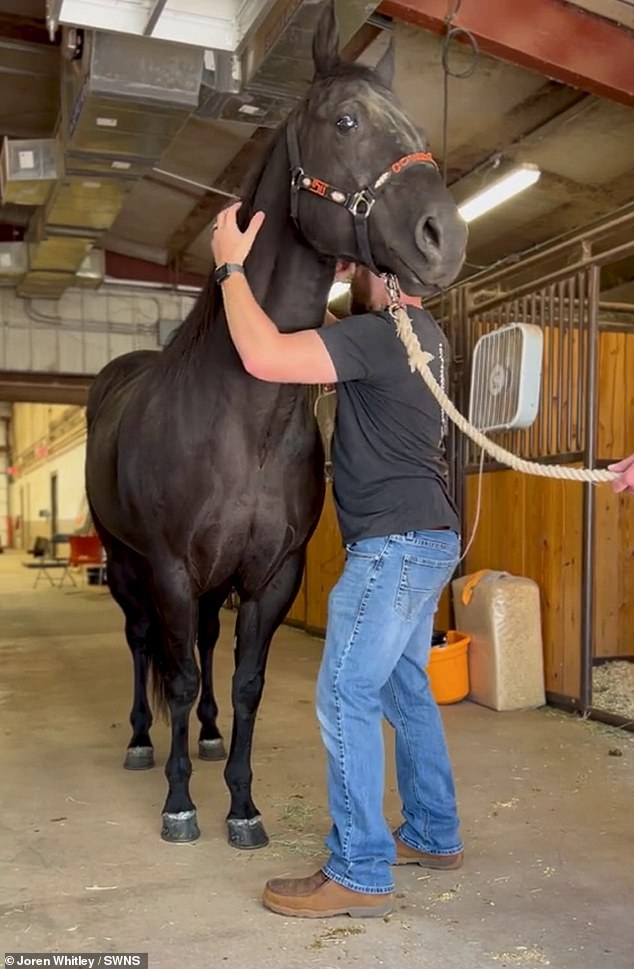
After four years of combined study, Joren graduated from chiropractic school and received his license to practice human and animal chiropractic.
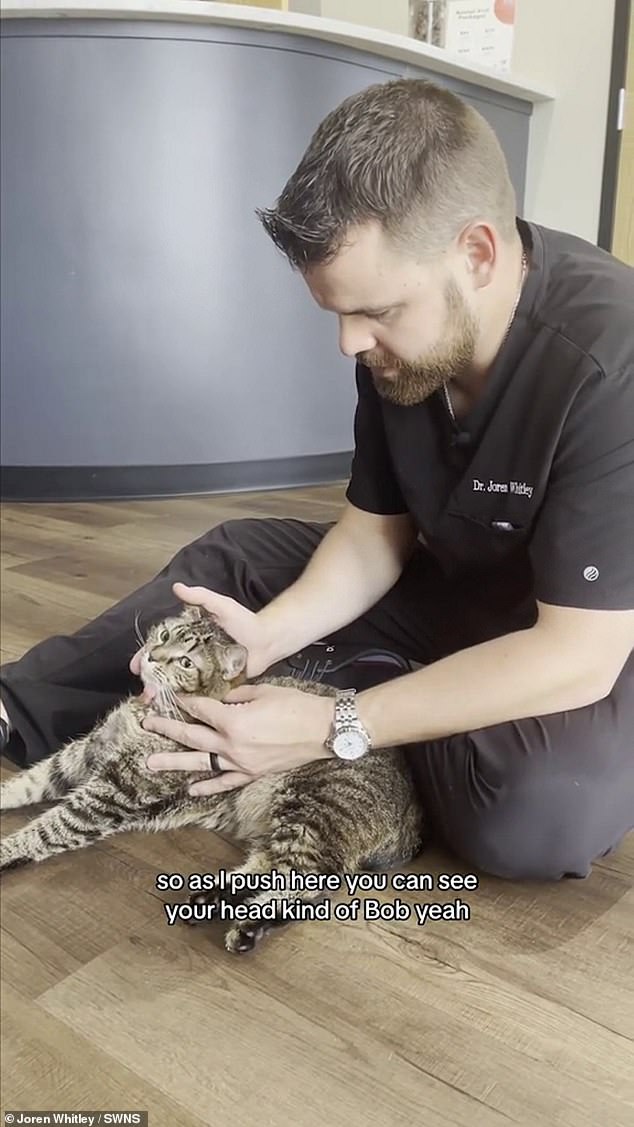
Joren treats domestic animals such as dogs and cats, but also travels to zoos and safari parks to help animals in need.
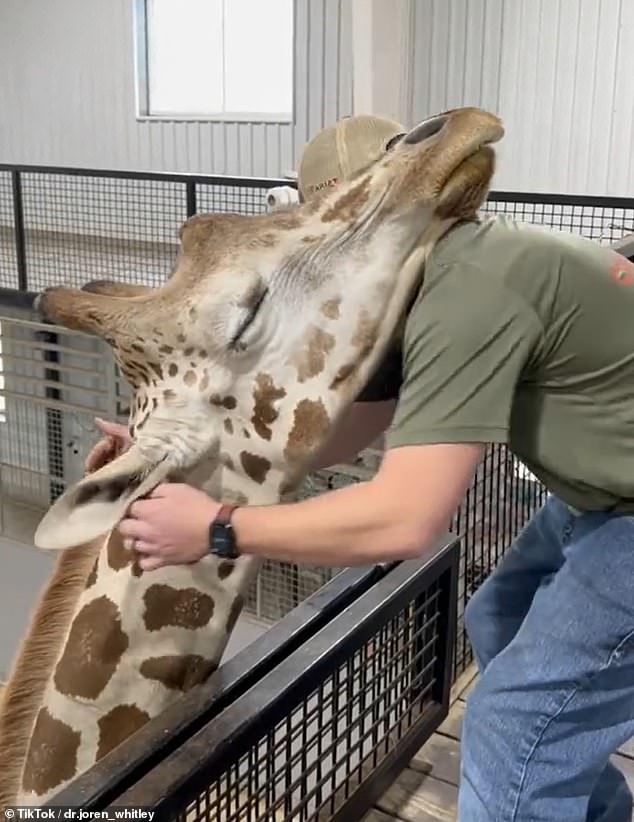
If he is called to work with an animal he has not treated before, Joren returns after treating it to check its well-being.
Joren said: ‘When the joints of the body, whether human or animal, do not move in their normal range of motion, we call it a subluxation.
‘This causes the joint to not react properly to stress. Over time, this inability to adapt to stress causes inflammation in the joints and causes the surrounding bones to change shape, producing spondylosis or arthritic spurs. That’s when people and animals need help.’
Joren treats domestic animals such as dogs and cats, but also travels to zoos and safari parks to help animals in need.
He said: ‘I’ve worked with the Oklahoma City Zoo here and the East London Zoo in South Africa.
‘The rest of the exotic animals are owned by private owners here in the United States.
‘Most of the time they call me when they realize their animal could benefit from chiropractic care.
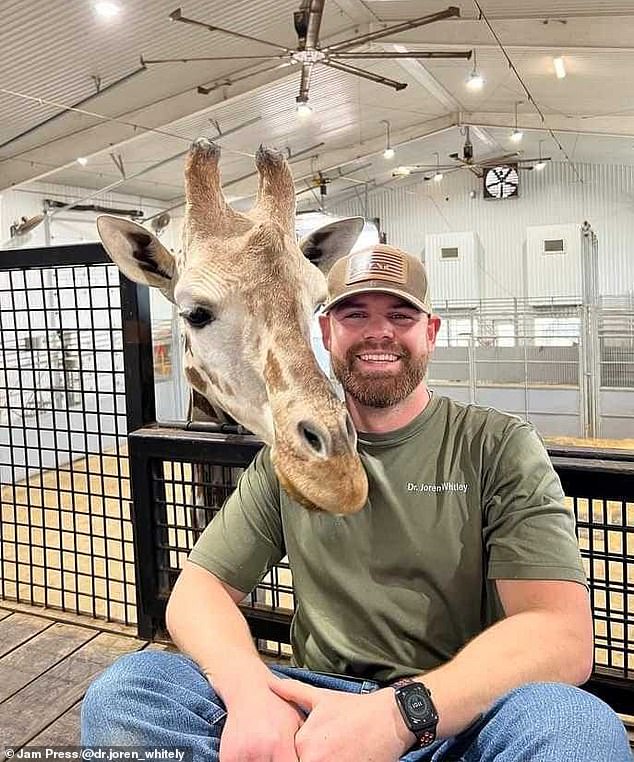
Joren also reaches out to zoos or organizations to help educate them on how chiropractic could be beneficial for their animals.
‘I also reach out to zoos or organizations to help educate them on how chiropractic could be beneficial for their animals.
“There is a very clear lack of understanding or knowledge that chiropractic for animals exists.”
The animals Joren works with are different sizes, so he has to adapt his treatments. He said: ‘At school we learned to work with small animals based on the spine of a dog and larger animals based on the spine of a horse.
“From there, there will be variations, but most of them will be slight in nature.”
Should he be called upon to work with an animal he has not treated before, Joren makes sure to go back and study the animal.
He said: ‘I spend a lot of time at the Oklahoma City Museum of Osteology.
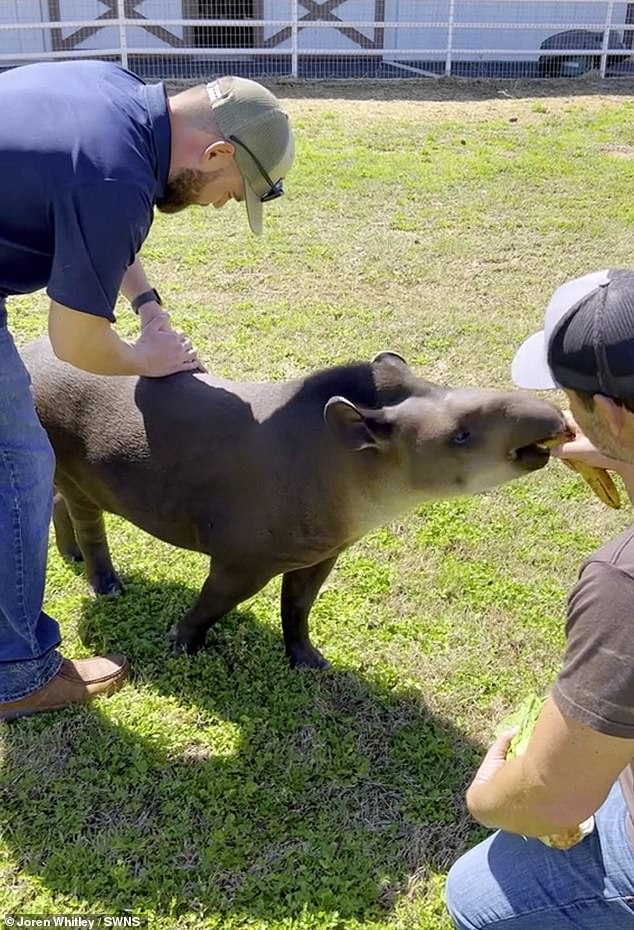
Joren pictured performing his chiropractic work on a tapir at a zoo
‘They have a very large catalog of spines ranging from humans to aquatic animals and things found in Africa like elephants, rhinos and giraffes.
‘Any animals you have not worked with before are available for examination and study.
“So when I have the opportunity to work with that animal, I completely understand how its spine is supposed to move or what it’s not supposed to move.”
‘I am able to adapt the spine of one animal to that of another as the horse and the zebra should be similar.
‘A giraffe will have a very similar spine, but the size of the vertebrae or the length of the bones will be different.
“These variations not only change the overall size and shape, but also the physiology and biomechanics of each animal. “That changes how I would approach each adjustment.”

